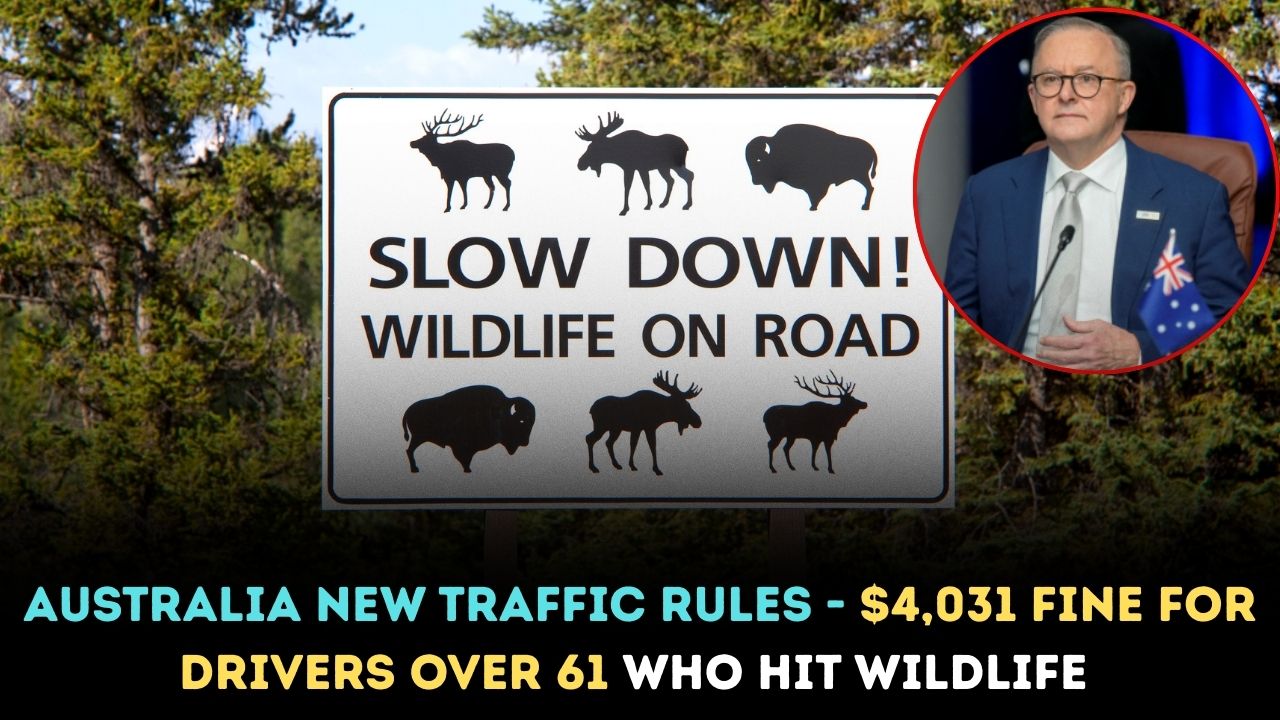Join on WhatsApp
Get the latest updates directly on WhatsApp – motivation, news & more!
Beginning September, 2025, Australian roads will turn their focus to maintaining a marriage between thoroughfares and protecting wildlife and road users with tougher, wildlife-centered traffic regulations. One such regulation blocking wildlife trafficking brings to focus how to derive the optimal outcome of all factors. The wildlife trafficking regulation that blocks optimal outcome pathways for the wildlife and road users is a $4, 032 fine for drivers above 61 years of age, should the drivers come across wildlife, and for not reporting the issue. The harsh confines of this law is due to rising evidence which suggests a connection with older drivers and increased road kill wildlife collisions.

The Rising Concern Over Collisions with Wildlife
The collisions of wildlife with vehicles is a phenomenon that Australia grapples with, thousands of native animals, such as kangaroos, and koalas become road kill. The concerns arising from the insecurity of slowing down for wildlife, not only touches on wildlife conservation, and the essence of it, but increases human danger as well. The evidence suggests that bridging the age of 60 seems to possess vulnerable drivers, stuck due to their slumping reflexes, and frequent drives in areas beside wildlife.
The legislation constructed demands that as wildlife trafficking is a phenomenon, senior citizens and drivers of above that age how to steer the vehicle, is impertinent, it is the responsibility to the right side of the road, cease steering motion, canvas for wildlife, ensure the surroundings to be safe and inform designated police wildlife or emergency wildlife settlers. Non-reporting will be followed with stringent regulations, a sight of wildlife as well as the area surrounded will become steep for that law as well.
The Issues and Effects of Senior Drivers
The regulation stipulates the possible caution needed by older drivers during periods of peak wildlife activity, which is particularly at dawn and dusk. Failing to address a wildlife accident—especially one that leads to a damaged vehicle and personal injuries—could result in severe legal consequences beyond just the financial implications.
Government Initiatives and Raised Awareness
To facilitate adaptation, qualified trainers will run awareness programs and wildlife-safe driving workshops. They will also revise and assess wildlife corridor road signs. Seniors are ultimately encouraged to practice reduced speed in the open country, the judicious use of upper-beam lights, and increased awareness of animals near roadways.
Conservation and Road Safety
The wildlife road casualty reduction measures must also be tempered with the protection of road users and road traffic accident casualties. The intention behind the heavy fine is to curb omission and careless driving around crossing places. The intention of the regulators is not to scapegoat the elderly but to ensure people live and fulfill their responsible position in society by aiding suffering wildlife in a timely manner.
A Shared Responsibility About Australia’s Wildlife
The fine of $4,032 may seem excessive, but it does emphasize how important it is to protect Australia’s wildlife, and how important wildlife protection is to all users of the road. Senior citizens, because of the incidence rate, are the Primary actors it comes to compliance with the law. Their allegiance to the law will go a long way in nature conservation, in road safety, and in the preservation of Australia’s natural heritage.


